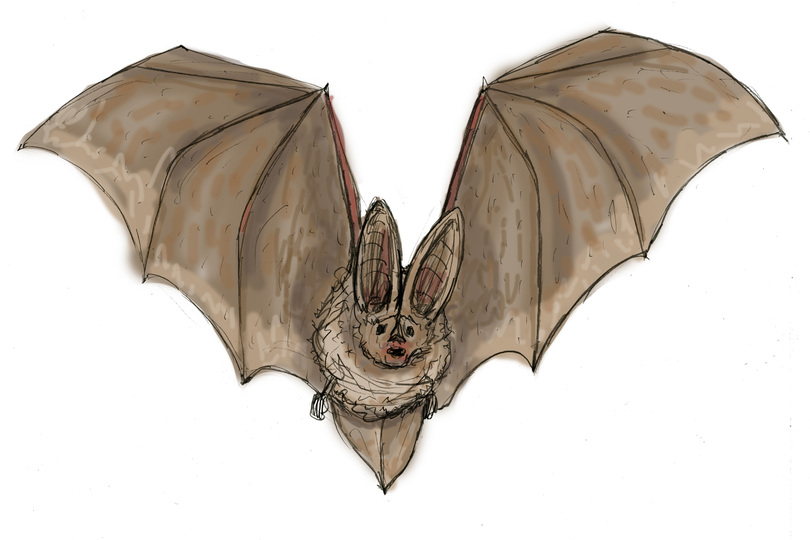ESF researchers win award for trying to improve the survival rates of bats

Devyn Paseretti | Head Illustrator
Bats are important to the ecosystem because they eat pests, which allows farmers to use less pesticides.
Two researchers from SUNY-ESF are part of a team of scientists that was recently honored for a study focused on improving the survival rates of bats.
The team of researchers, which was led by the United States Department of Agriculture Forest Service, was presented with the Research Partnership Award at the 2016 Wings Across the Americas Conservation Awards ceremony in Pittsburgh, Pennsylvania, in March.
Jacqueline Frair, a wildlife ecologist and associate director of the State University of New York College of Environmental Science and Forestry’s Roosevelt Wild Life Station, and Ben Prom, a lab technician, were the two researchers from SUNY-ESF that were involved with the project, which focused on white-nose syndrome in bats.
White-nose syndrome is named for the white tint that can be found on the nose and wings of infected bats. The syndrome is caused by a fungus that originated in Europe. In 2007, the fungus was found in a cave in New York state, and since then, it has spread across the U.S., said Deahn Donner, principle investigator for the research team and a project leader and landscape ecologist with the Northern Research Station.
The fungus is found in the soil of caves, and since it is not native to the U.S., Donner said, it quickly spreads. The syndrome disturbs bats from their rest, causing them to wake up frequently. This becomes deadly when it occurs during hibernation. The bats wake up hungry and thirsty, but are unable to find food in the middle of winter, often leading to death by starvation and dehydration, Donner said.
“We are going to need a lot more partnerships in order to deal with this disease,” Donner said. “It cannot be done by one researcher. It will take many different people from many different disciplines and angles in order to get a handle on it.”
It is important to try to eliminate white-nose syndrome, Donner said, as bats play a critical role in the environment.
“Bats provide an ecological service, free of charge,” she said.
In one night, a lactating female bat can eat its bodyweight in bugs. Without bats eating the pests, farmers would need to spend larger sums on pesticides. This would result in a higher cost of production, and thus a higher price for consumers, Donner said.
Bats also play a role in the production of tequila. They are one of the main pollinators of Century Plants, which are used in the production of tequila, according to batcon.org.
The research partnership aims to find methods of helping the bats to cope with the disease. Through the partnership, scientists can study microbes on bats’ wings that may be useful in building immunity. Researchers also identify where land managers may improve habitats so migrating bats are healthier and more resilient to the disease, according to a release on SUNY-ESF’s website.
Donner and her team are using an integrated disease management (IDM) strategy that observes the host, environment and pathogens, which is known as the IDM triangle. In order to successfully combat white-nose syndrome, researchers must focus on all three aspects and look at how they interact, Donner said.
“We don’t know enough about bats, and they are very difficult to study,” she said. “This is not something that can be solved quickly.”




